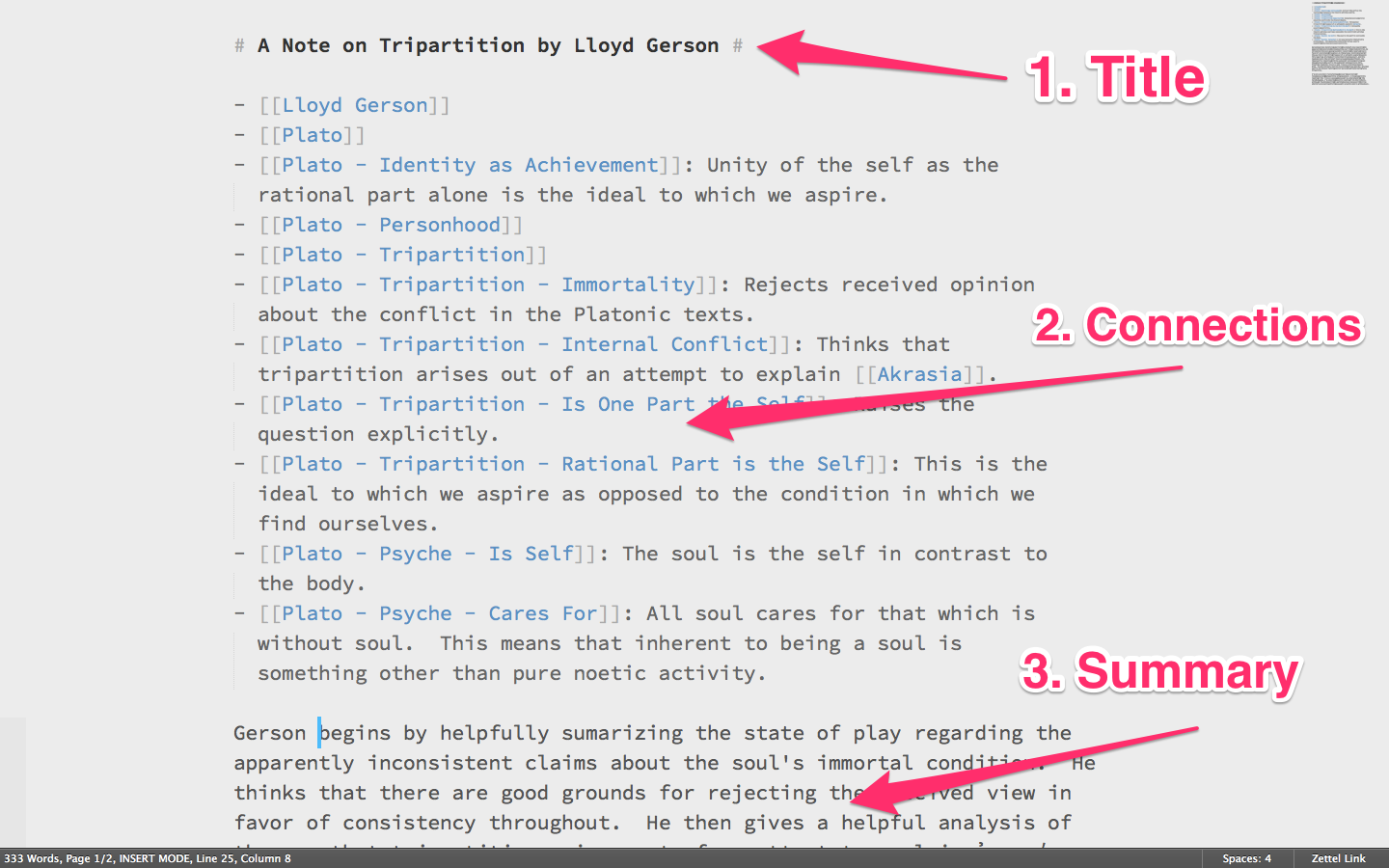Reading Notes
In his How to Write a Thesis (Amazon), Umberto Eco suggests that you keep a box of index cards devoted to “reading index cards” alongside another box with “idea index cards.” In my digital version of the index card box, I have been primarily keeping “idea” notes, with one idea per file. Reading Eco, however, has encouraged me to also keep distinct “reading” notes, with one file per book or article that I read.
Here is an example screen-shot of a reading note:

In this screen-shot we see three areas:
- The title tells me both the title of the article and the author. This region is not always identical to the actual file name. Because this note is a child of
Lloyd Gerson.md, the note file name isLloyd Gerson - A Note on Tripartition.md. - A bullet list of connections to idea notes (or other reading notes) with a brief one-line explanation of what the connection is. I leave out the explanation when it is completely obvious (e.g. the link to
Plato.md). - A summary that contains both a sketch of the overall argument and my response to it. I compose a draft of this in my notebook while the reading is fresh in my mind as soon as I finish reading the article (or as soon as I am done with each chapter in the case of books). I then mostly transcribe this into the Zettelkasten later with a little cleaning up. This also serves the function of review.
I do not use this reading note file to keep track of bibliographic information as Eco suggests. Instead, all this information is stored in a BibTeX file so that it can be referenced automatically with Pandoc-style citations.